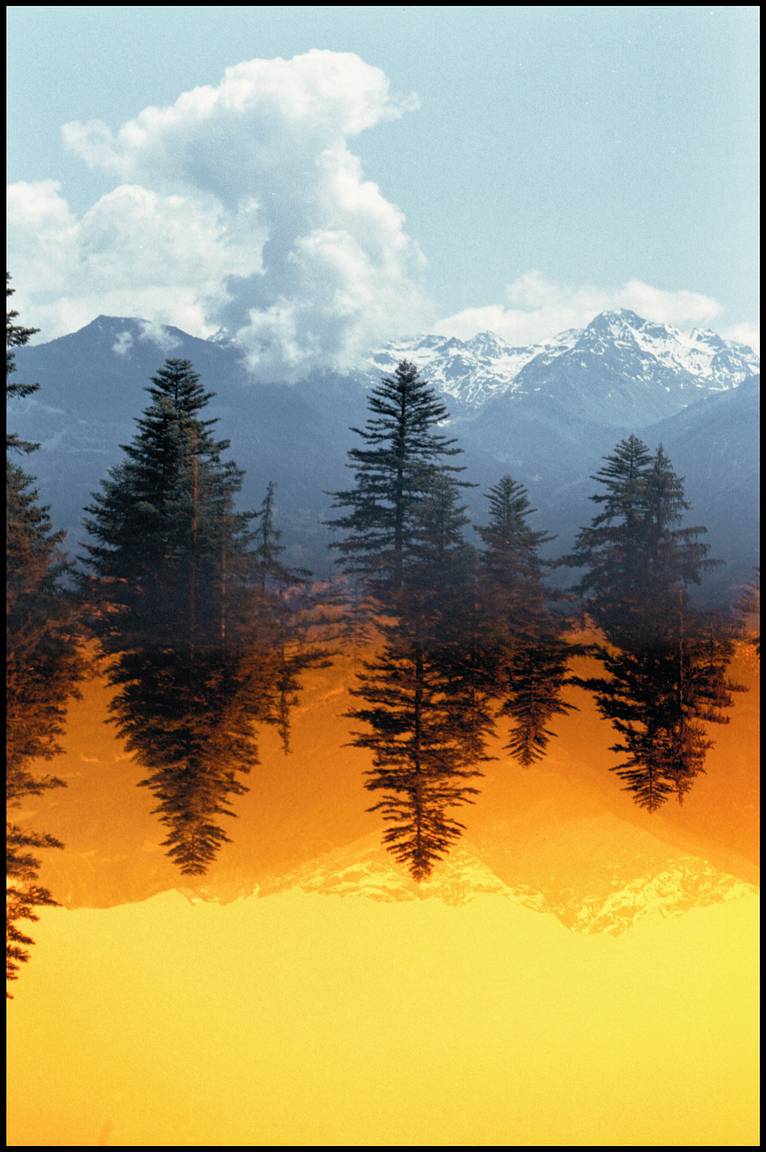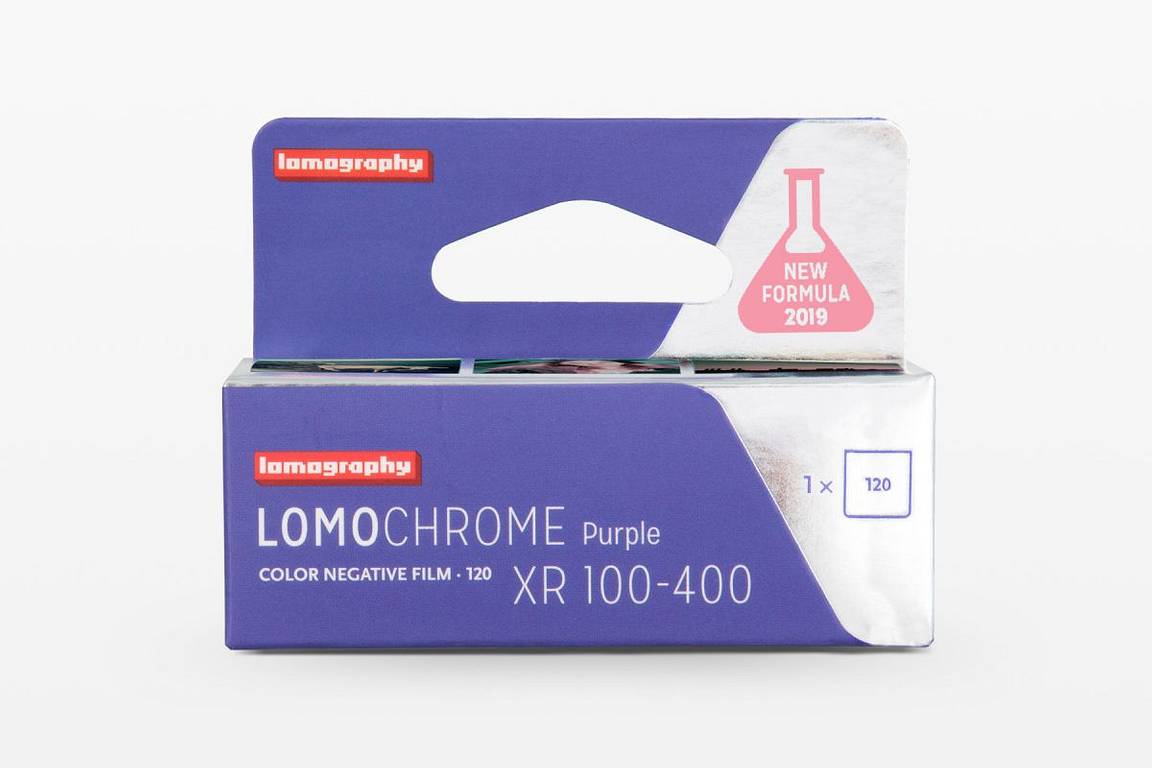Photographing Wonder with Community Member @S-Ji
3 17 Share TweetStéphanie (@s-ji) is a French photographer who takes artistic photos of everyday life with her family in Switzerland. Her photographs – which include double exposures, exposing-both-sides (EBS) and film swaps – attest to her appreciation of familial bonds and expressing one's curiosity and emotions through film photography. Her images also demonstrate a deep connection to nature, as well as a playful and experimental approach to photography. Here's our interview with her.
Hi, Stéphanie! Welcome to the magazine. Can you start by telling us about yourself? How and when did you start shooting film?
I am 44 years old, I am French but I've been living in Switzerland, in a mountain canton, since almost 15 years ago. I work as an X-ray technician, I produce images even at work, even if in this case X-rays replace photons. I had been shooting digitally for several years while hesitating to get into film.
I really started in 2021, when my grandmother died. In her house to be emptied, I saw an Ultra-Fex from the 50s. I saw it as a challenge, the 620 mm films that it accepts no longer exist. From the beginning I started rewinding 120 mm film by hand, a bit of an adventure.
I was very moved when I started, thinking of the previous owners of the camera (my deceased grandparents) and not knowing at all what this antique Ultra-Fex had in its stomach. The result was beyond my expectations and I loved this practice where everything suddenly slows down.
With film I have, humbly, the impression of being an artisan photographer. This makes me more careful, I press the shutter button more sparingly and therefore with full awareness. I look around intensely before shooting, wait for the perfect light because there's no more thoughtless repetition of digital capture; film costs money and waste is not my thing.
And then the delicious wait in this world where everything moves quickly, watching for the postman who will bring the developed films and slowly scanning one shot after another with the surprise of the result. An old technique and an old camera made me experience new and intense feelings. I very quickly invested in a scanner and a better quality camera, an all-manual, hyper-reliable and iconic one, the Nikon F2.
Can you tell us about your double exposures? What made you interested in this technique?
I was already doing it by digital superposition. With film, I first loved the magic of "blind" exposure and then the more I thought about constructing these double exposures more intelligently, the more proud I felt when the result met my expectations or even exceeded them.
I only photograph outdoors, I love my planet and its crazy landscapes, and my favorite models are my children who live there peacefully. Combining them is what I prefer to do. Imagining wooden bones for them, greening their faces, blending them into the landscape is a way for me to respect my Home with a huge H and show my love for them, using creativity.
Do you also teach your children about film photography to impart the craft?
Indeed, I explained to them the principle of double exposure especially because these are the only photos where I ask them to be more or less still. It was logical that they understood the process to accept or not this little temporal sacrifice. Usually, if they are in my landscape photos, they are moving and doing their own thing, I definitely don't intervene, it's their naturalness and their freedom that interests me!
For the double exposure and especially for the EBS I explained to them why I was writing a notebook, what my little drawings corresponded to. They were very interested. My son and I decided to make a character from his favorite video game together (a sort of centaur in Zelda called Lynel). With my daughter it was the choice of what she wanted to superimpose on a simple portrait of herself (she chose a particular flower).
They had lots of other ideas to submit to me and I think I will do them, to let them participate even more in the next EBS film, whether or not they are in the photo because they mainly had ideas related to nature and everyday objects.
What's your process like when shooting double exposures? Do you compose on the go or do you plan it out?
A bit of both. As I progressed in my practice I tried to think about more complex images, about the clever association of under and over-exposed areas. Like replacing a tooth with a mountain (in the valley in front of my house, the real name of the mountain is the "White Tooth"), embedding an entire waterfall in my thirsty son's body during a hike, replacing my daughter's ear canal with a snail shell.
And then sometimes I don't want to think but just to be surprised so I leave it to chance a little.
You've also tried EBS. How did you get into this technique and what's the appeal of it for you?
I actually discovered this technique recently and it ties in with the artisanal side that I mentioned above, I said to myself 'Wow?!', I have to make a half-lens cover (I could've bought it but it's less fun), then I'll have to turn the film over precisely even if I use pieces of tape.
Then synchronize, write everything down in my notebook to that the double-sided photos are correctly merged. An artistic and manual challenge! I had to work precisely and get involved, that's something exciting!
Are there stories behind your images or are you more into exploring the outcome of the image itself?
I really try to bring poetry into my photos, perhaps my light melancholy also shines through a little, I like the intensity that emanates from it.
I tested more geometric shots, symmetries with EBS but I really prefer the organic side of my shots. I want to talk about symbiosis and the "kingdom of life" which should supplant the overly restrictive "animal kingdom".
You've tried a few Lomography film stocks. Do you have a favorite among them?
I tested the Berlin Kino first, then colorful ones: LomoChrome Metropolis, LomoChrome Turquoise and the LomoChrome Purple in 120 format rewound by hand for the old UltraFex (I loved giving it this facelift!)
I still have a LomoChrome Turquoise in stock that I can't wait to use and I would like to try the Fantôme Kino, Potsdam Kino and the Lady Grey. At the moment I'm taking some surprisingly very colorful shots but originally I was taking a lot more black and white shots, I'd like to get back into it.
Are there experiments you'd still like to try out?
There are the film soups that intrigue me, I haven't taken the plunge yet. I also recently saw a technique for double-exposing Polaroids by keeping only the transparent layer, it's a process that I would really like to try but I haven't yet decided to buy a Polaroid camera, it makes me want it though.
And then I haven't yet reached the end of my ideas with the 35 mm double exposures, I still have plenty to have fun with, no doubt!
We'd like to thank Stéphanie for sharing her images and stories with us! To keep in touch, visit her LomoHome.
written by sylvann on 2023-12-20 #culture #people #places #double-exposure #switzerland #ebs #s-ji
















































3 Comments